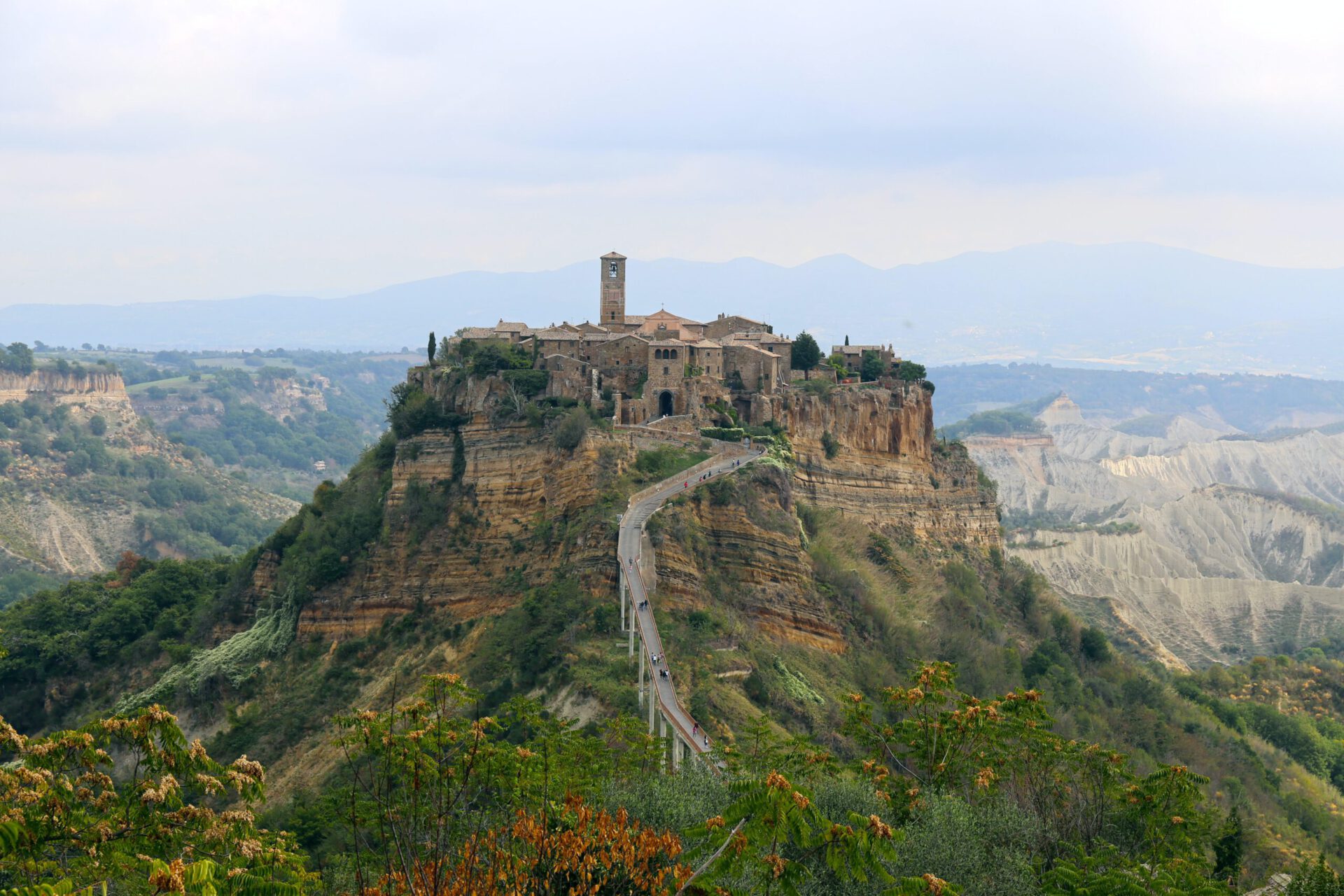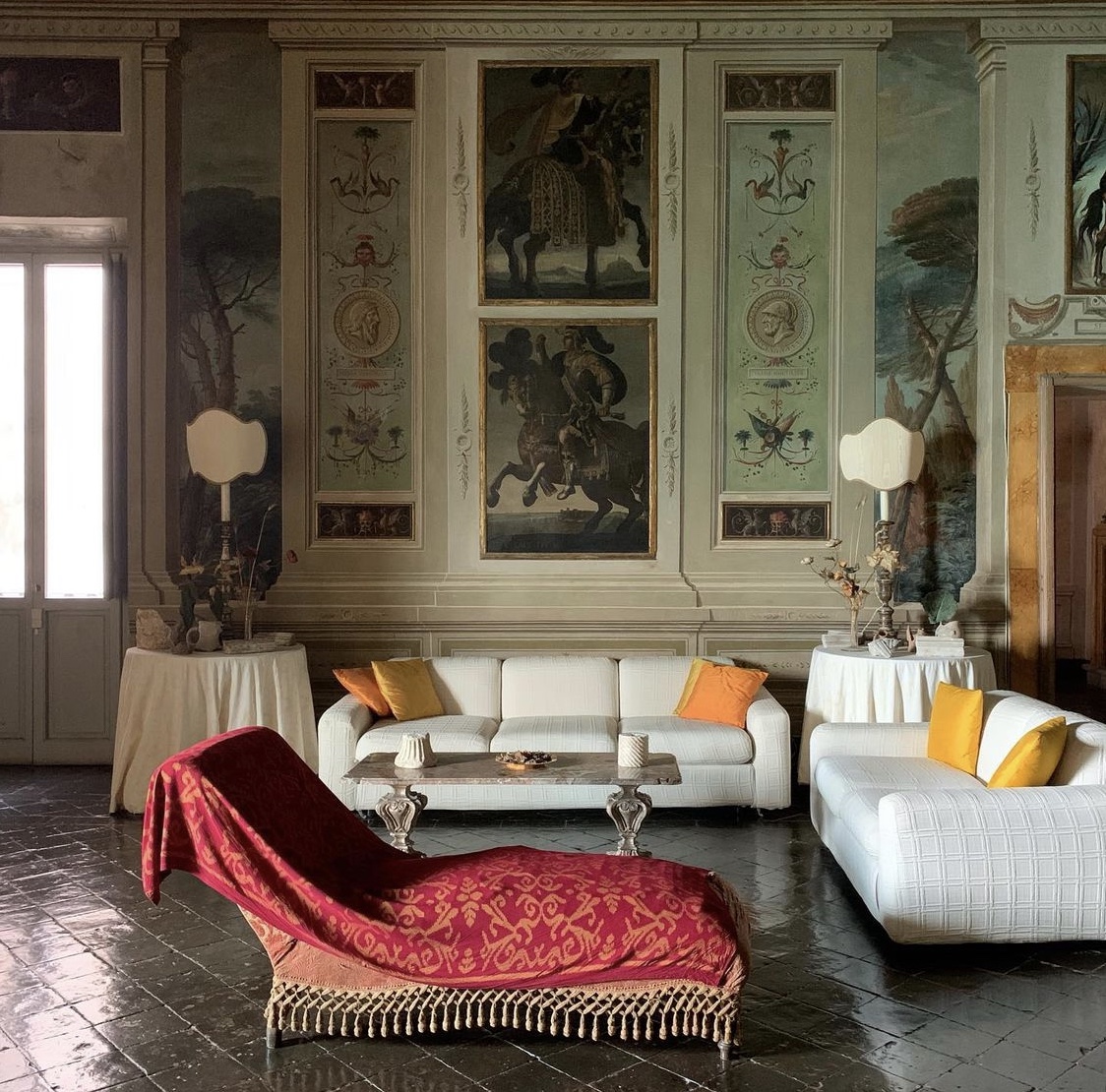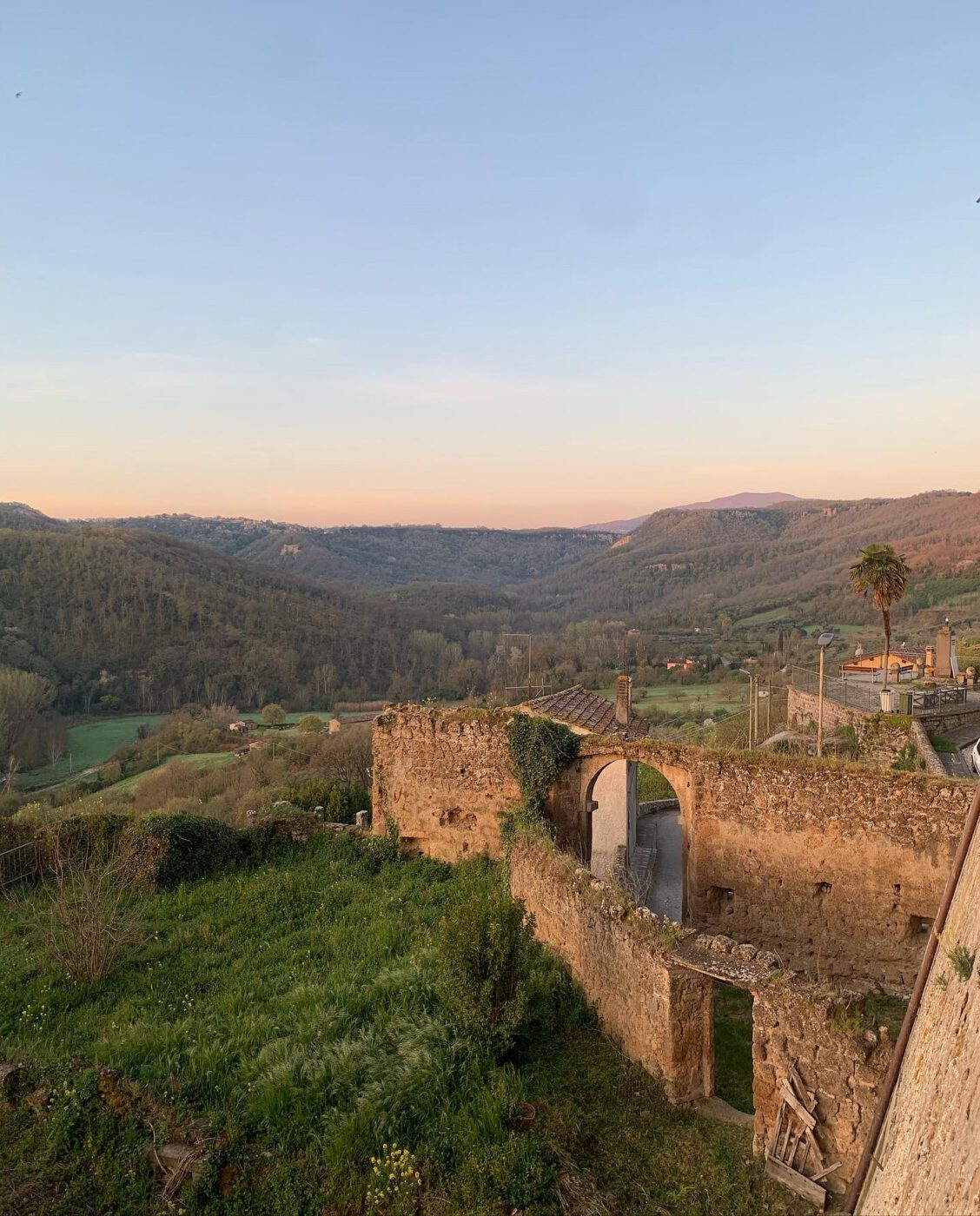During my time in the bustling Città Eterna, there have been days when I can’t get enough of her and days when I need to escape her. Those who know Rome are all too familiar with these breaking points, when we say “basta!” to the heat, the lines, the bureaucracy. Off we go on the train.
It’s easy to hit neighboring spots–south to Naples or east to the other side of Lazio. If I’m feeling daring, it’s only three hours north to Milan. These regions are known as travel destinations, the ones I, like many others, tend to gravitate towards. But when there’s not much more to discover in these areas and I’ve seen everything I need to see (for now), I look a bit further afield. Aren’t we all looking for that unfamiliar, thrilling escape every once in a while? Pay attention, because there are hidden gems in the shadows of all of these popular spots.
I found my secret gem: La Tuscia, a historical landmass that includes northern Lazio, southern Tuscany, and parts of Umbria along the Tyrrhenian coast. Never heard of La Tuscia? Not so long ago, neither had I.
HISTORY OF LA TUSCIA
Volcanic soils, renaissance villas, lush gardens, and natural wine producers mark this territory’s rolling hills. Homeland of the Etruscan civilization from the 8th to the 3rd century BC, La Tuscia was the earliest urban development in the northern Mediterranean. The Romans named this highly advanced population Tusci or Etrusci, which is how the ancient name “Tuscia” came to be.
The Tusci built their medieval towns perched on hilltops and on the banks of rivers and streams, which eventually became hot spots for ancient Romans breaking free from the city. (I chased the same feeling not so long ago.)
Inventions and innovations commonly associated with the Romans actually originate in La Tuscia. To name just two: winemaking and pottery, artistic activities that are still the backbone of Italy’s culture and economy. During the times of medieval Italy and Renaissance Rome, the most influential families (including the Farnese and Orsini) found their castles and palaces in the region. And, at the turn of the 20th century, the buzz of this bohemian dreamland brought a new wave of artists, writers, and filmmakers to La Tuscia; many of their epic villas are now visitable today.
WHEN TO VISIT LA TUSCIA
The best time to discover the area, in my opinion, is spring, when the hills begin to bloom again but before the summer sun dries all the green into brown.
HOW TO GET TO LA TUSCIA
Reaching Tuscia isn’t as tricky as expected from Rome. The capital city, Viterbo, is an excellent starting place for first-time visitors. Pick up the local line from Stazione San Pietro in Rome, kick up your feet and within a 90-minute journey, arrive at Viterbo Porta Romana, the last stop. If no-frills sandy beaches are on the agenda, there’s a train that stretches along the coast. Try stops near Montalto Di Castro (Montalto Marina) or Tarquinia (Lido di Tarquinia).
My personal transportation preference for the area is a car–easy, limitless, and scenic. Like Rome, La Tuscia wasn’t built in a day. It takes some time and exploration to touch each corner, understand the complexity, and feel the lingering spirits and imprints the Tusci have left.

PLACES TO VISIT IN LA TUSCIA
Each village in the region’s 60 communes is uniquely its own, making it hard to choose which to visit. But to align yourself with the area and territory, start at the capital Viterbo. Positioned at the foot of the Crimini Mountains, the city is known as the “City of the Popes” (it had a papal seat during the 13th century) and is characterized by gray-stoned walls and buildings that survived much of the war.
West of Viterbo lies Tuscania, one of the first Tusci villages. North is Civita di Bagnoregio, nicknamed “la citta che muore” (“the city that dies”), one of my favorites. A magical, mystic village perfectly placed on a hilltop, only reached by crossing a narrow bridge dangling above a forest where both time and space feel suspended. It’s worth spending the night at Corte della Maestà to catch the panoramic sunset stretching all the way to Lazio.
South of Viterbo is a chain of villages worth the extra stops; you must weave through the winding back roads to reach each one. Caprarola, perched upon the volcanic hills of Crimini, is home to the Farnese family that ruled the surrounding land during the Renaissance. There are Vetralla and Ronciglione, both south-central, and finally Montefisciane, a safe haven for wine lovers.
WHAT TO DO IN LA TUSCIA
Gallivanting through ville, palazzi, and castelli is almost inevitable. Villa Rossi Danielli and Villa Farnese are musts–the former for sleeping and the latter for visiting. Villa Rossi Danielli is a tranquil, 12-bedroom weekend escape built in 1500 with linen and wood interiors that get wonderful natural light from the surrounding park, while the grand Farnese Villa of Caprarola is a pentagonal mansion built in a Mannerist style. Castello Ruspoli of Vignanello, a 16th-century castle with a flourishing yet typical giardino all’italiana of that era, is today one of the most important in all of Europe and is still owned by the Ruspoli family. The gardens at Relais Villa Lina in Ronciglione, meanwhile, house 40 hectares of an 18th-century bioenergetic garden.
The areas around Lake Vico and Lake Bolsena, both formed by the volcanic activity of Mount Venus, are sanctuaries for a tranquil Italian Sunday picnicking along the shore and pausing to bathe in the thermal waters. Lake Vico is famous for its hazel and chestnut farms, whereas Bolsena is full of olive groves and produces unmatched olive oil. Finally, there are two unmissable farms: Tenuta di Bertarello, a magical country house with a pool, vegetable garden, and ancient olive trees; and Tenuta di Paternostro, an equestrian farm, both still hidden from the eyes of mass tourism.

WHERE TO EAT IN LA TUSCIA
A short, simple and authentic list of the best eateries (and one vineyard) in La Tuscia.
Piazzetta del Sole Osteria (Farnese): Quaint, charming, and outstandingly delicious, all locals from this village direct visitors here. Using seasonal produce, the osteria produces innovative dishes while staying true to Tuscian cuisine. Order a liter (or two) of the house wine, some of the best you may ever taste.
Osteria Trattoria Da Alfreda (Tuscania): This osteria serves a mix of authentic Roman and Laziale food, like gnocchi al sugo, followed by a steaming hot plate of beans. Dine al fresco under an array of canopy trees.
Il Porticciolo (Trevignano): On the northern shore of Lake Bracciano, Il Porticciolo serves local meat and fish or pasta made in house, all paired with a tranquil atmosphere.
Trattoria Del Cimino (Carparola): In one of the most beautiful villages in Italy, this trattoria has been in the family for five generations and boasts a 150+ label wine list. Come hungry and leave happy.
Locanda Del Tartufiere (Canino): Truffle primi, truffle secondi, and truffle dolci. Need I say more?
La Rimessa dei Pescatori (Lake Bolsena): Opened seasonally from April to September, these two lakeside, open-air eateries serve daily fish caught in Lake Bolsena. Expect to find anything from fritti to the local specialty, la zuppa di pesce, paired with some local, natural wines from the bar’s menu.
Poggio Bbaranèllo (Montefiascone): I love Montefiascone mostly for its wine culture and this young, eco-friendly, family winery and vineyard, run by all women.









